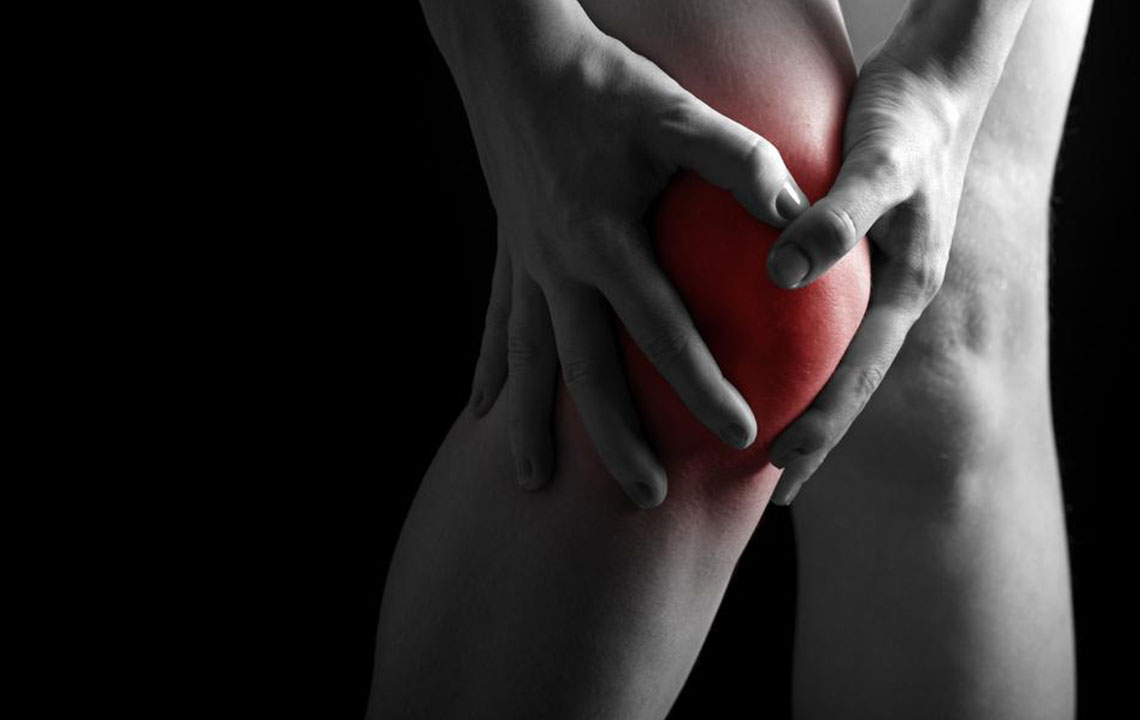Most Common Causes of Knee Pain Diagnosis and Treatment

Most people suffer from knee pain in their lives at some point in time. Exercise, sports, etc. cause tendinitis, muscle strains and serious injuries to cartilage and ligament. Many people are so severely affected by knee pain that their daily activities are restricted. There are others for whom even mild knee pain is a matter of concern as they hinder the active lifestyle they want to live. It is important to investigate the reason that is causing the knee pain and treat it immediately to avoid further damage.
Given below some of the most common causes of knee pain:
Knee ligament injuries
The ligaments connect your thigh bone to the lower leg bones. They hold the bones together and also keep the knees stable. In sports, sprains and knee ligament tears are extremely common and occur to the posterior cruciate ligament (PCL), anterior cruciate ligament (ACL) and medial collateral ligament (MCL). If you suffer from any of these injuries, you would experience extreme pain in the knee and may need surgery as well.
Knee cartilage tears
Other injuries like tears can happen in the cartilage. It is a semi-hard tissue which covers the end of the bones. There are two menisci on both sides of the joint- the lateral meniscus found on the outside of the knee and the medial meniscus positioned on the inside of the knee. Meniscus tear causes knee pain. A knee cartilage tear is a quite common and needs surgery to treat it.
Arthritis of the knee
Arthritis causes severe knee pain and sometimes disability as well. It is a degenerative condition that needs surgery eventually. There are three main kinds of arthritis. These are osteoarthritis, post-traumatic arthritis, and rheumatoid arthritis. Any of these conditions can result in swelling, the stiffness of the knees. You may find it difficult to bend the knees as well.
Rheumatoid arthritis of the knee
Rheumatoid arthritis is an autoimmune disease. It makes the tissue around the joint to get thickened and inflamed. Chronic inflammation can cause loss or damage to the cartilage. Rheumatoid arthritis accounts for 10% to 15% of all cases of arthritis.
Post-Traumatic Arthritis
This kind of arthritis result from a severe knee injury that includes ligament tears and bone fractures. These injuries would cause damage to the cartilage in your knee and cause swelling, stiffness, and pain as well over time if neglected.
Osteoarthritis of the knee
Among all types of arthritis, osteoarthritis is the most common. It wears off the cartilage present in the knee joint. It is common for people who are 50 years old and over. The impact of the condition worsens in these people since wearing down of cartilage is associated with aging. The various things that osteoarthritis brings with it are a limited range of motion, pain, tenderness, weakness, deformity, and swelling of the knee. Some of the major causes of osteoarthritis are previous injuries, genetics, weight, age, and illness like gout or tumor. Osteoarthritis can also cause injuries sustained in sports or wear and tear as a result of physical work at job locations like manufacturing and construction.
Dislocation
Dislocation of the knee joint causes knee pain. This emergency needs urgent medical intervention. Knee dislocation can prevent blood flow to the lower leg and cause additional problems. This kind of injury happens during the motor-vehicle accident as the knee hits hard on the dashboard.
Fractures
Direct trauma to the bony structure of the knee causes the bones to break. This is a very painful injury to the knee. It is not only painful but can also interfere with the functioning of the knee as well. Fractures always need immediate attention. A thorough examination is required to be performed to detect any other injuries.
Diagnosing knee pain
Doctors diagnose knee problems or arthritis using physical evaluation and s-rays. The questions asked by the physician include your level of pain, functioning, and flexibility of knee, general mobility, etc. They would also run special tests on you to find out the exact kind of arthritis you are suffering from or anything else that is affecting the knees.
Treating knee pain causing Due to arthritis
Knee pain worsens as arthritis progresses. Treatments for this condition include strengthening exercises, weight loss, pain relievers, and wrapping. Pain relievers to be used include non-steroidal anti-inflammatory drugs and acetaminophen.
Knee pain causing due to arthritis can be resolved with surgery. It may be a partial or complete knee replacement surgery. It is important to discuss with the doctor about the various treatment options available before opting for the last resort which is surgery. If you are opting for the surgery, ensure that your physician is an expert surgeon as well. There may be some preparation that you need to do before the surgery which your doctor will tell you.


